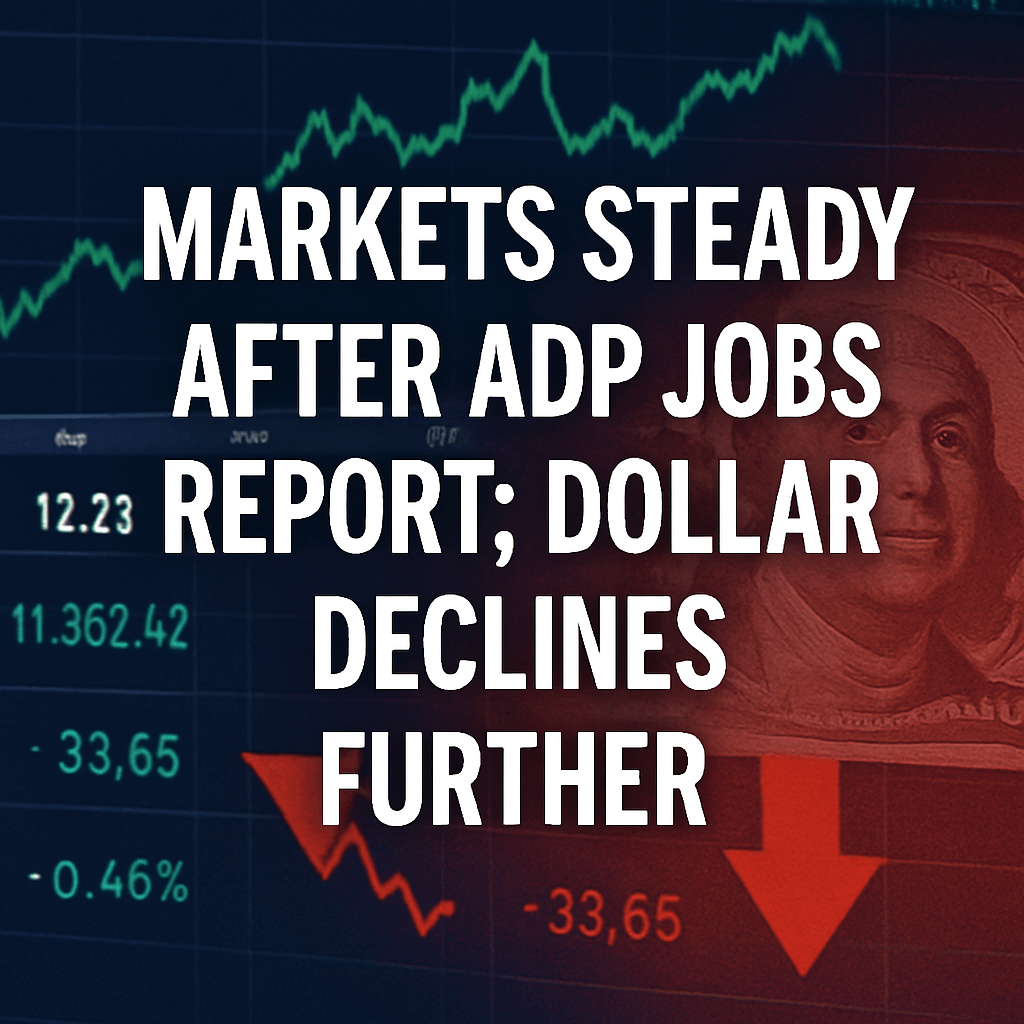Markets Steady After ADP Jobs Report; Dollar Declines Further

The S&P 500 and the Dow Jones Industrial Average exhibited little to no movement on Wednesday, with the Nasdaq Composite marking a modest uptick of 0.4% by session’s end. The primary focus of the day was the release of the ADP National Employment Report, highlighting a concerning trend in the U.S. labor market.
ADP Report Indicates Weak Job Growth
According to the ADP May Employment Report, the U.S. economy only added 37,000 jobs in May, significantly below analysts’ expectations of approximately 110,000 jobs and well below a revised figure of 60,000 for April. This figure represents the slowest pace of hiring since March 2023 and raises alarms about the impact of ongoing trade tensions on economic performance and labor market dynamics.
Market Reaction: A Mixed Bag
Despite the dismal jobs report, market reactions were relatively subdued. The S&P 500 closed with a negligible increase of 0.01%, while the Nasdaq showed a more favorable closing at 0.32%. In contrast, the Dow Jones was the only major index to finish in the red, completing the day down by 0.22%. The intraday trading exhibited typical volatility patterns, but there were no alarming disruptions noticeable to investors beyond the day trading desk.
What Lies Ahead: Job Growth Trends
The critical question is whether May’s job figures signify a temporary downturn or the beginning of a more profound decline in employment growth. Insights into this situation are expected to become clearer with the forthcoming Bureau of Labor Statistics (BLS) report set to be released on Friday, which will detail the nonfarm payrolls and unemployment figures.
“Today’s downside surprise could raise more eyebrows than usual,” said Chris Larkin, managing director of trading and investing at E*Trade. “Some tariff-related slowdown in the labor market is expected; the question is how significant it will be, and how the markets will respond.”
Currency Markets Under Pressure
In tandem with the labor market report, both Bitcoin and the U.S. dollar faced declines, with Bitcoin slipping by 0.3% and the U.S. Dollar Index dropping by 0.4% on Wednesday. This downward trend for the dollar is part of a broader pattern that has been unfolding for several weeks.
Reasons for Dollar Decline
The ongoing slide of the U.S. dollar can largely be attributed to eroding investor confidence, exacerbated by the imposition of tariffs on a broad array of trade partners. The inconsistent application of President Donald Trump’s tariff policy—characterized by stages of implementation and suspension—has led to a climate of uncertainty for investors. Since the beginning of 2023, the dollar has depreciated by approximately 9%, with analysts projecting this trend could continue if current economic conditions persist.
- Investor Sentiment: An increase in bear positions against the dollar indicates a growing consensus among investors regarding the currency’s challenging outlook.
- Geopolitical Factors: Heightened trade tensions contribute to the volatility in currency markets, reinforcing bearish positions against the dollar.
- Economic Indicators: Upcoming economic reports, including inflation data and employment statistics, may further influence the direction of the dollar.
Conclusion
The release of the ADP jobs report signals potential challenges ahead for the U.S. labor market, particularly in the context of ongoing trade disputes. As markets await further economic data from the BLS, the sentiment among investors remains cautious, particularly regarding the trajectory of the U.S. dollar and broader economic indicators.
For further insights and analysis on the implications of the labor market on the stock and currency markets, stay tuned as we continue to monitor these developments closely.